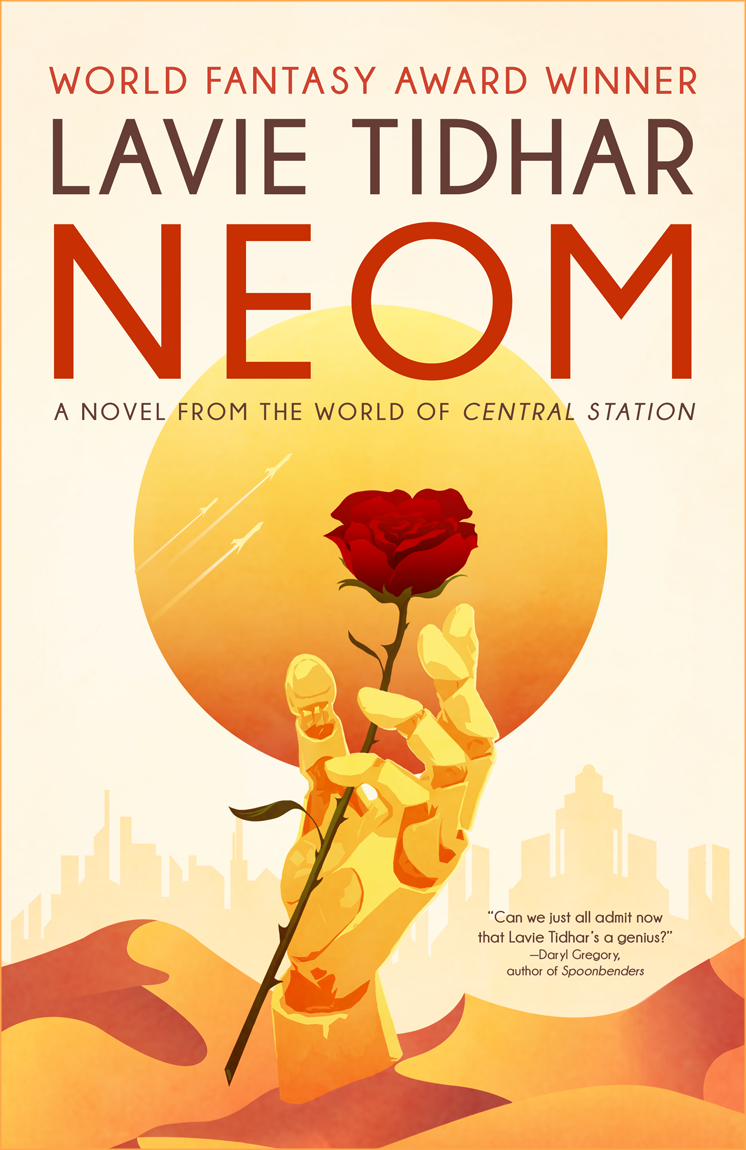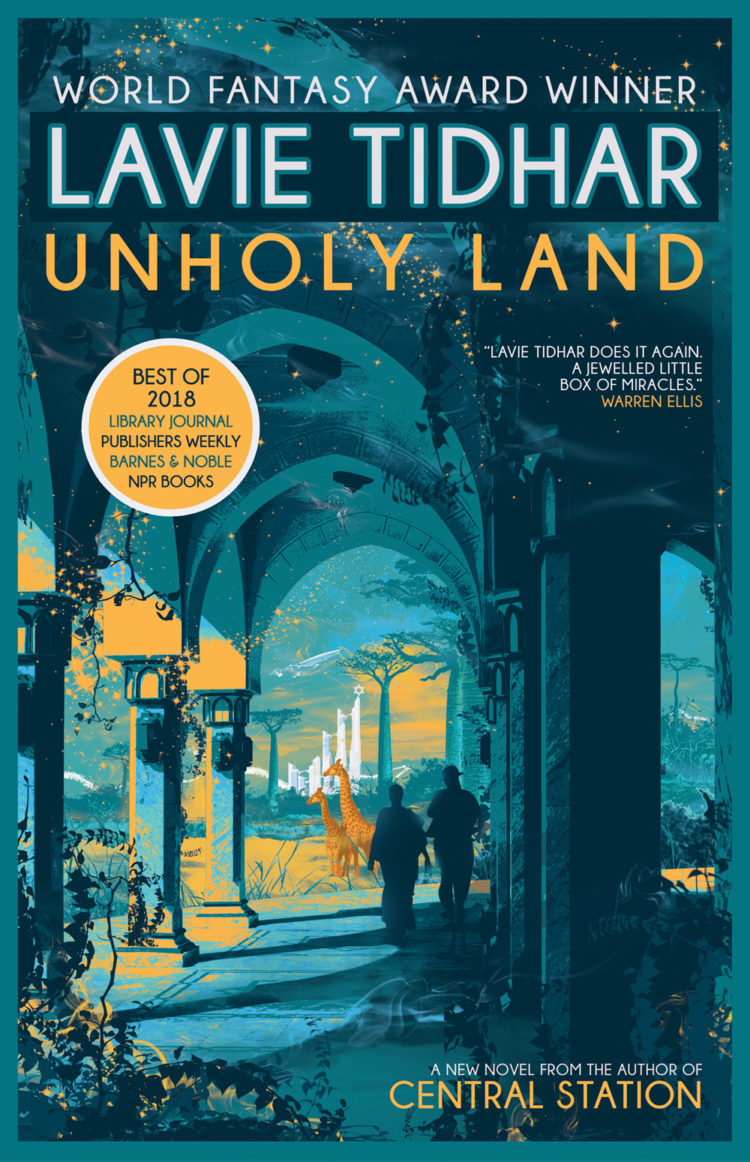For all its looming threats, Lavie Tidhar’s NEOM is a city you’d like to visit
Though still over a month from its November publication, reviews roll in for NEOM, Lavie Tidhar’s long awaited return to the universe of the John W. Campbell Award Winner CENTRAL STATION garnered a review from Gary K. Wolfe in Locus and a positive mention from Sally Adee at The Last Word on Nothing in the essay “The future is a myth that is true and false” on science fiction and the future. There’s Always Room for One More includes Tidhar’s UNHOLY LAND among Top Ten Tuesday: Geographic Titles. Clarkesworld (Issue 193, October 2022) offers the new short story “Junk Hounds” in text and audio.
Preorders for NEOM are currently available via the Tachyon site and all finer booksellers.

Nor is it necessary to have read CENTRAL STATION, although it does help flesh out Tidhar’s emerging portrait of a transformed Middle East. For all its fearsome ancient ordnance, its economic disparity, and its looming threats, NEOM easily joins the list of SF cities we’d like to visit.
Locus
There are ways to rescue ourselves from dystopia if we can tear ourselves away from obsessively reading and writing the same stories about it over and over again. If we can make different stories. Take NEOM. The highly decorated SF author Lavie Tidhar has written a book about its future that comes out in November. (I’ve never regretted reading anything by Lavie Tidhar.) Stories can be alchemy. They can transform dystopia from received wisdom, back into into myth.
The Last Word on Nothing

A former Subjective Chaos Kind Of Nominee, UNHOLY LAND is a time-travelling murder mystery and a series of alternate histories (some of which must be averted). Lavie Tidhar has been on my list of authors to read for ages, and this sounds fascinating and – with its themes of walls and border control – entirely on point.
There’s Always Room for One More
The walls were beige and you could see where the rust took hold. A tiny dead robot floated past Amir, feelers drooping. It was the same color as the walls and shaped like a grasshopper. Amir made a grab for it but a hidden maintenance duct sucked it up and it vanished with a soft, almost hungry pop. Other tiny robots crawled along the wall, attempting to repair a recent fracture.
Junk Hounds
The Heavenly Palace, a hundred years on from its grand opening. Once it was glorious. Now it was just another piece of floating junk.
Amir loved it. He loved the worn grooves in the floor and the faded carpets in the Stargazer’s Lounge. The whistle of the ivory balls in the old centrifugal roulette wheels and the way the bartender still mixed a martini like he was serving it to Neil and Buzz at the Oasis Hotel in Maspalomas after Apollo 11 came back from the Moon. The Heavenly Palace was a junk hound’s Mecca, and if one day the owners decided to stop boosting it and doom it at last to the inevitability of orbital decay, you could bet Amir and every other junk hound in Low Earth Orbit would be swarming over the spoils like locusts.
